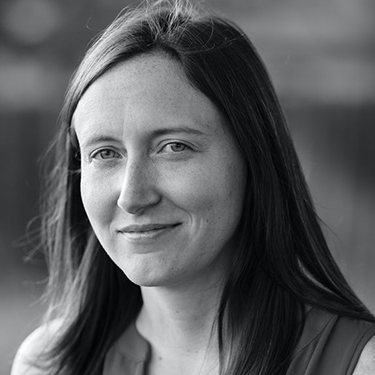Jean Flanagan

How I got here:
My science education journey started when I took a role as a Research Assistant at AAAS Project 2061 in Washington, DC in 2009. While there I discovered my love for curriculum development. In 2013, just after the release of the NGSS, I made the switch to the Smithsonian Institution to play a leadership role in the development of NGSS-designed curriculum.
I learned about the Humane Genetics work when I was interviewing to join BSCS in 2019. While I’d known about BSCS for a long time, hearing about this line of research (along with the organization’s thriving equity and social justice working group) made me see the organization in a new light – I was excited to see that the organization was taking risks in order to do work that was truly transformative.
When I first joined BSCS, I was brought on primarily to help lead a large-scale curriculum development project, which ultimately became BSCS Biology: Understanding for Life. But in whatever scraps of time I could cobble together, I started dipping my toe into the Humane Genetics work, and now as I branch out into other projects I’m excited to play a regular role on this team.
Why I choose Humane Genetics:
I originally got into science education because I found the work of figuring out how curriculum and instruction can promote conceptual understanding deeply interesting on its own. But I was also passionate about using what we know about how students learn to better prepare them to participate in our democracy and understand the intersections of science and society. The Humane Genetics work has only increased my awareness of just how tightly linked the science curriculum is to these broader social goals.
How my identity intersects with my work:
Growing up White, cisgendered, able-bodied, and in an upper-middle class community, I have had to learn to constantly examine my role within systems and structures that marginalize. As a bi-identified woman I’ve also had my own experiences of marginalization. And as the daughter of a disabled father, I had a close up view into how disabled people are constantly “othered” and deprioritized. All these experiences inform and motivate my work and give me a sense of responsibility – to contribute to research and design in education that actively works against bias, and takes the role that science plays in social inequities seriously.
What I do when working:
As a Science Educator and the Program Area Director for Resources for Teaching and Learning, I play a lot of different roles and wear many hats. I lead design teams and manage projects, develop strategy and advise on organizational policy, write and edit lessons, and never stop learning. On the Humane Genetics projects, I’ve mainly been involved in the design and development of curricular interventions, and along the way have grown in my own understanding of the theoretical basis behind anti-essentialist materials.
Other work I’m interested in:
Other than Humane Genetics, I am broadly interested in how materials can support students to reason about socio-scientific issues, understand the roles that science can play, and develop agency for social and environmental justice.
What I do with the rest of my life:
I enjoy hiking and running on Colorado’s trails with my husband and our rescue dog. I love music; we have a large record collection and enjoy getting to live shows when we can. But I’m also an introvert and usually have my nose in a book. Belgian beer and chocolate = my happy place.
Stats (as of 7/29/2022):
Longest hike: 26.2 miles/elevation gain 7,500 feet (Tava via Barr Trail); Number of siblings: 0; Number of photos and videos I’ve taken of my dog: it can never be too many.